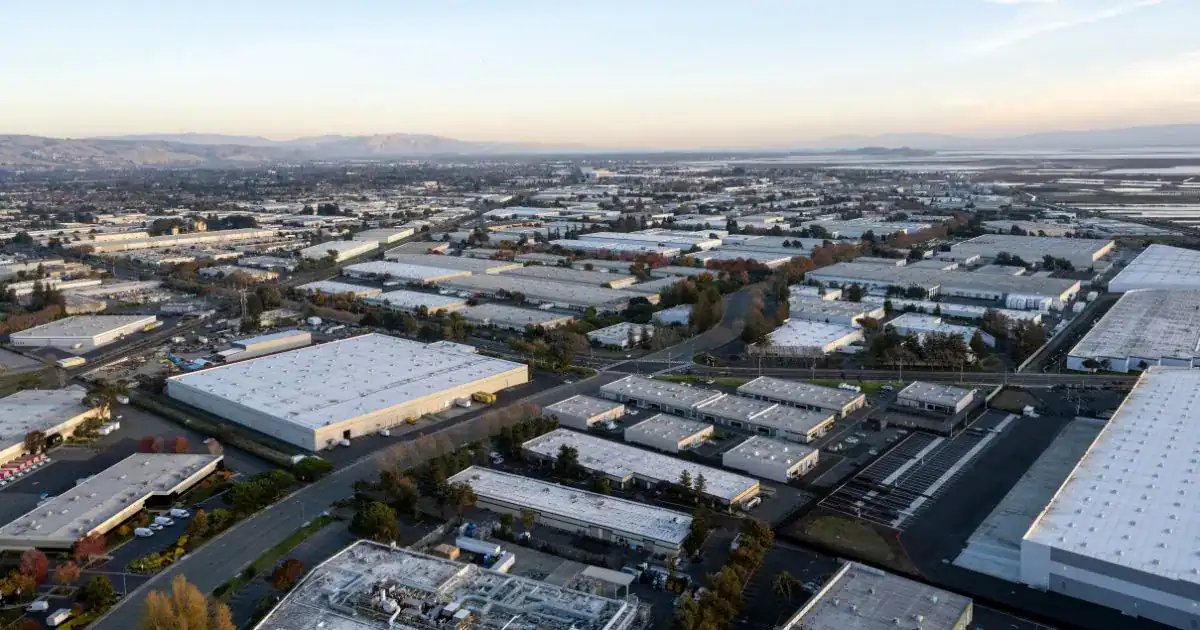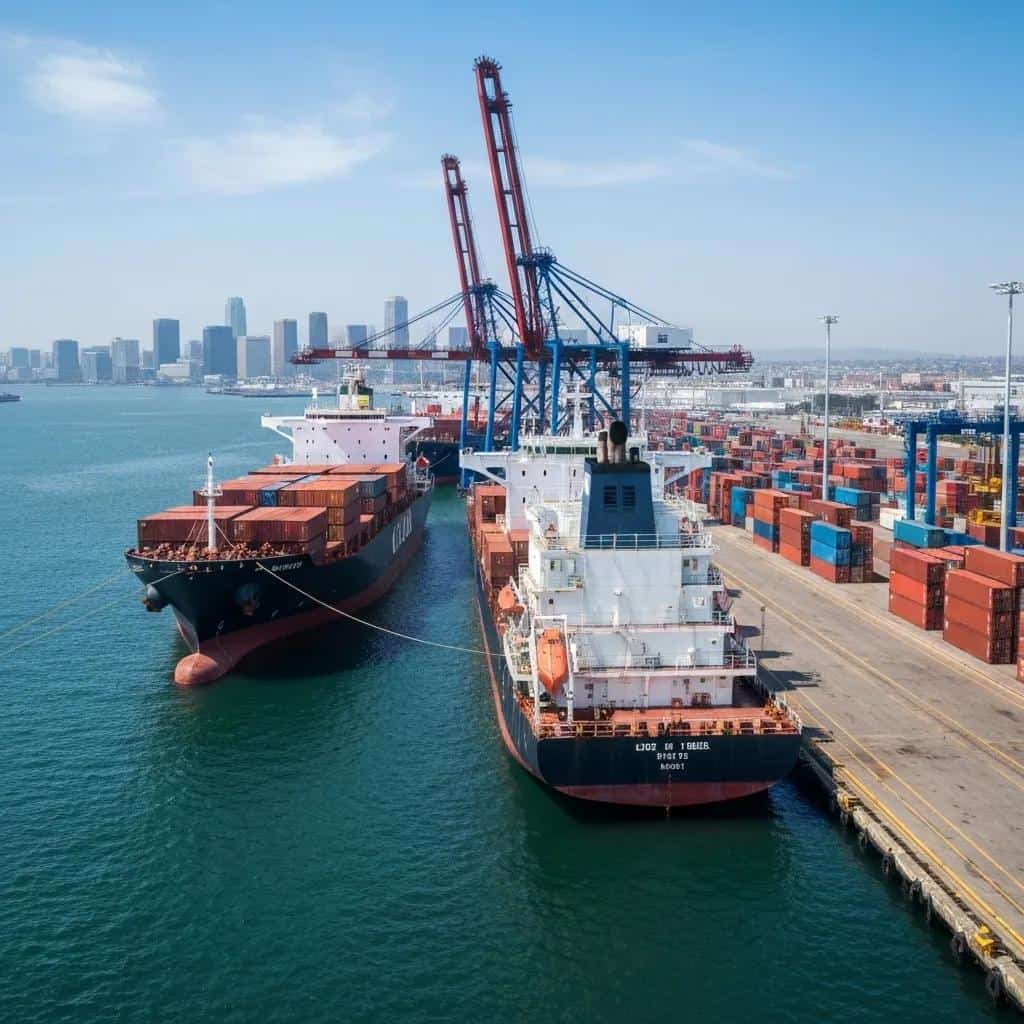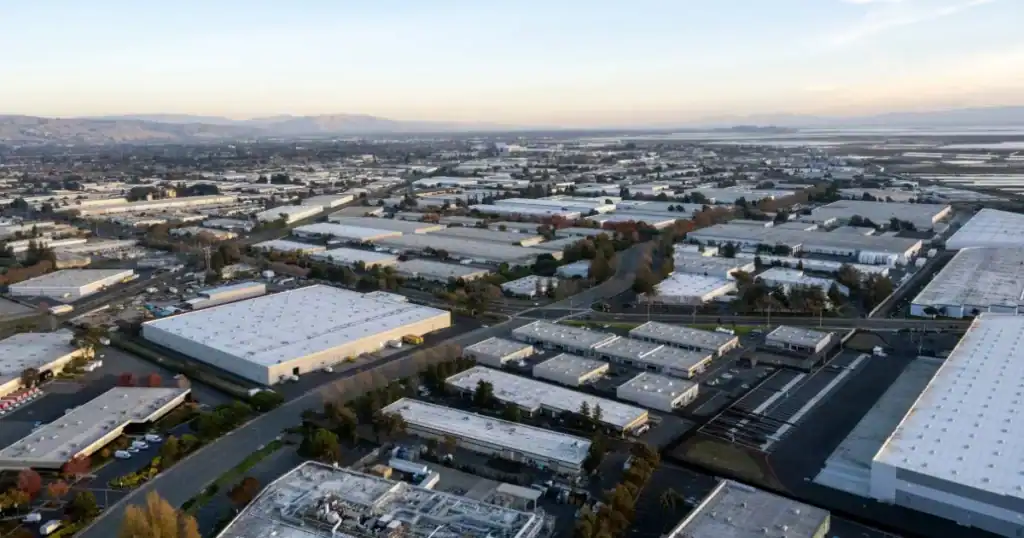Key Factors Fueling Southern California’s Industrial Market Boom: Trends, Drivers, and Investment Insights 2025
Southern California’s industrial real estate growth story is a dynamic blend of booming e-commerce, crucial port operations, and the ever-present challenge of limited land. This creates a fertile ground for investors and owner-users eyeing long-term gains. By dissecting vacancy rates, rent shifts, regional nuances, and the broader economic picture, this guide equips you to decode complex market data, sharpen your analytical edge, and connect with a vibrant community of real estate aficionados. We’ll kick off with a snapshot of current trends and key performance indicators, then dive into specific analyses for the Inland Empire, Los Angeles County, and Orange County. We’ll also explore the wider economic and industry forces at play, map out future outlooks and investment strategies, and finally, show you how to cultivate the expertise needed for sharp, informed decisions. Throughout, you’ll discover how Keyz.com’s Expert Insights and Educational Resources on Southern California Industrial Real Estate Trends are designed to boost your skills and foster community engagement.
What’s Driving the Current Trends in Southern California’s Industrial Market for 2025?
Southern California’s industrial market in 2025 is characterized by a noticeable uptick in vacancy rates and a softening of rents. We’re moving from the intense absorption seen during the pandemic to a more measured recalibration, fostering a healthier balance between supply and demand. Following the explosive growth from 2020–2022, fueled by e-commerce logistics and supply chain diversification, the region has experienced negative net absorption in several quarters as sublease space and new deliveries enter the market. Grasping these shifts is crucial for forecasting, managing risk, and pinpointing prime entry points for owner-users and investors looking to leverage renegotiated lease terms and emerging micro-niches.
How Has the Southern California Industrial Market Transformed Since the 2020-2022 Surge?
The post-pandemic era saw demand skyrocket, with record-low vacancies and unprecedented rent growth, driven by companies scrambling for distribution space near major population centers. As delivery speed became paramount, developers unleashed over 80 million square feet across Southern California’s submarkets. This boom period set new highs for rents, net absorption, and speculative construction. Today’s market evolution reflects a return to normalcy: landlords are offering incentives, sublease inventory has surpassed 25 million square feet, and institutional investors are reassessing cap rates—paving the way for more strategic growth.
What Key Performance Indicators Define the Health of This Market?
The essential metrics for industrial real estate performance include vacancy rate, rent per square foot, and net absorption. These indicators gauge market stability, tenant appetite, and leasing momentum, guiding decisions on when to acquire, how to negotiate leases, and what to include in development pipelines.
These figures paint a clear picture of a market transitioning from hyper-growth to a phase of negotiation, where increased availability favors tenant-friendly terms.
Southern California Industrial Market Outlook 2025
As Southern California’s commercial real estate markets head towards the close of 2024 and into 2025, the industrial sector’s trends are beginning to stabilize. Vacancy rates have steadily climbed due to new construction and natural market adjustments, while the double-digit rent growth of previous years has moderated, reflecting a more ample supply of industrial space. The market is anticipated to see an uptick in investment and owner/user sales in 2025, potentially spurred by lower interest rates.
This research directly validates the article’s overview of current trends and key performance indicators, particularly the general market recalibration and the projected outlook for Southern California’s industrial real estate in 2025.
How Is the 2024-2025 Market Recalibration Affecting Industrial Real Estate?
The market recalibration occurring in 2024–2025 is marked by a surge in sublease space, more subdued rental increases, and a slowdown in speculative development. Sublease listings now represent over 10% of the total available space, prompting landlords to offer incentives like rent abatement and tenant improvement allowances. Developers have put the brakes on over 25% of planned projects, awaiting clearer demand signals. This recalibration is fundamentally reshaping leasing expectations and creating strategic opportunities for businesses and investors adept at navigating concession structures.
How Does the Inland Empire Shape Southern California’s Industrial Real Estate Landscape?

The Inland Empire’s expansive logistics infrastructure and its prime location near rail, freeway, and ports position it as a critical indicator for broader Southern California industrial trends. Anchored by massive warehouse operations and third-party logistics providers, the region’s performance often signals demand shifts that subsequently influence the Los Angeles and Orange County markets.
What Are the Main Forces and Hurdles in the Inland Empire Industrial Market?
The relentless growth of e-commerce fuels the demand for large distribution centers in the Inland Empire, where land costs remain more accessible compared to coastal areas. Key drivers include:
- Its strategic position along major freight corridors, crucial for efficient last-mile delivery.
- Ample land parcels that accommodate build-to-suit projects exceeding one million square feet.
- A growing cold storage sector catering to the increasing demand for perishable goods.
Challenges on the horizon include escalating construction costs, persistent labor shortages in warehousing, and rising insurance premiums. Successfully navigating these factors is essential for developers and owner-users planning new facilities.
How Are Vacancy Rates and Rent Trends Shifting in the Inland Empire?
Vacancy rates in the Inland Empire have edged up to 6.4 percent as new construction outpaces immediate occupier demand. Asking rents peaked in 2023 at $1.45 per square foot per month and have seen a softening of approximately 4 percent through 2024–2025. The increased availability in submarkets like Ontario and Moreno Valley is putting downward pressure on lease rates, while high-demand corridors such as Chino and Eastvale maintain comparatively tighter conditions.
Q2 2025 Industrial Market Dynamics in Inland Empire and Los Angeles
In Q2 2025, the Inland Empire industrial market displayed signs of recalibration, with sublease availability reaching 16.8 million square feet and total vacancy at 8.4%. Average asking rents adjusted downward to $1.09/SF, marking a 30% decrease from 2023 peaks. The Los Angeles industrial market also recalibrated, experiencing a rise in sublease availabilities to 10.7 million square feet, contributing to a 7.4% total vacancy, and a fall in asking rents to $1.35/SF, a 31.5% drop from 2023 highs.
This citation provides precise, up-to-date data on vacancy rates, asking rents, and sublease space for two critical submarkets, the Inland Empire and Los Angeles, directly substantiating the article’s detailed KPI table and regional analyses.
What’s the Current Status of New Construction and Development Pipelines in the Inland Empire?
New construction in the Inland Empire has seen a slowdown of 30 percent since mid-2023, with many speculative projects being put on hold. The development pipeline now comprises 40 million square feet, a decrease from the 2022 peak of 60 million square feet. Developers are prioritizing build-to-suit projects and the transformation of older manufacturing sites into logistics campuses, conserving capital until pre-leasing thresholds of 60 percent are achieved. These dynamics are shaping supply expectations for the upcoming 12–18 months.
What Are the Key Dynamics of the Los Angeles County Industrial Market?
Los Angeles County’s industrial sector is significantly shaped by port activity, the diverse nature of its submarkets, and local policy initiatives that influence development and leasing across both coastal and inland areas.
How Does Port Activity Influence Industrial Demand in Los Angeles County?

Cargo volumes handled by the Port of Los Angeles and the Port of Long Beach directly fuel the demand for nearby warehouse space. Increased cargo diversions from other U.S. ports have maintained throughput at over 17 million TEUs annually, translating into consistent needs for cross-docking and transloading facilities. Fluctuations in global trade have an immediate impact on leasing velocity and rent growth in submarkets situated within a 20-mile radius of the harbor.
What Distinguishes Coastal from Inland Industrial Submarkets in Los Angeles?
Coastal submarkets, such as San Pedro and Vernon, typically experience tighter supply and higher rents—averaging $1.80 per square foot—due to land scarcity and their proximity to the ports. Inland zones, like the San Gabriel Valley and the UTC Corridor, offer more accessible rents around $1.25 per square foot, with a greater volume of speculative supply. Coastal properties command a premium for last-mile distribution needs, while inland locations attract users seeking larger footprints under more favorable lease terms.
How Do Local Policies Like Measure ULA Impact the Los Angeles Industrial Market?
Measure ULA imposes a 2 percent transfer tax on commercial property sales exceeding $5 million, which increases transaction costs and consequently reduces investment sales volume. By altering deal economics, this policy has led to a slowdown in acquisitions and has incentivized longer holding periods. Investors are now factoring these tax implications into their cap rate assumptions, creating a bifurcated market for properties transacted before and after the measure’s implementation.
What Is the Current Situation with Sublease Space in Los Angeles?
Sublease space in Los Angeles has climbed to over 10 million square feet, concentrated largely in submarkets adjacent to the ports. This surge is a result of occupiers reassessing their growth projections and releasing space they can no longer utilize. While this increased sublease availability can soften headline vacancy rates, it also presents opportunities for cost-conscious tenants to secure short-term occupancy with flexible terms.
How Is Orange County’s Industrial Market Performing Amidst Regional Shifts?
Orange County’s industrial market is demonstrating notable resilience, driven by its diverse economic base and constrained land availability, leading to stable vacancy rates and more moderate rent fluctuations compared to its neighboring counties.
What Factors Underpin Orange County’s Industrial Market Resilience and Diversity?
A robust mix of specialized manufacturing, biotech logistics, and e-commerce fulfillment catering to coastal populations creates a diversified demand base. Key sectors include:
- Life sciences, which require specialized climate-controlled facilities.
- Precision manufacturing, concentrated around established employment clusters.
- Last-mile distribution, serving affluent coastal communities.
This varied sectoral composition helps cushion the market against downturns affecting any single industry and supports steady leasing activity, even as vacancy rates experience modest increases.
How Are Vacancy Rates and Rent Stabilization Trends Evolving in Orange County?
Orange County’s vacancy rate currently stands at 5.7 percent, an increase from the 4.5 percent recorded in early 2024. Asking rents have stabilized around $1.45 per square foot per month, reflecting a balanced negotiation environment between landlords and tenants. Concession packages here tend to be less aggressive than in Los Angeles, underscoring the county’s strong tenant demand and limited opportunities for new land development.
Orange County Industrial Resilience and E-commerce Influence in California
The Orange County industrial market showed resilience in Q2 2025, with vacancy rates rising to 6.7% and average asking rents moderating to $1.53/SF. This stability is supported by a diversified economy and disciplined new development. Concurrently, e-commerce continues to exert a significant influence on warehousing and distribution across California, driving demand for facilities that enable rapid delivery times and fostering “infill” growth within metropolitan areas.
This citation addresses Orange County’s market performance and the broader impact of e-commerce on industrial demand and logistics, reinforcing the article’s sections on Orange County’s resilience and macroeconomic drivers.
What Are the Development Constraints and Opportunities in Orange County?
How Might the Proposed WARE Tax Affect Orange County’s Industrial Market?
The proposed WARE tax, a transactional levy on industrial properties, could potentially increase effective cap rates by 25–50 basis points and dampen trading activity. Owner-users might need to negotiate downward adjustments in listing prices to offset these transactional costs, while long-term holders could see this as an opportunity to acquire assets with less competition.
How Do Macroeconomic and Industry Factors Shape Southern California’s Industrial Market?
Broader economic forces—ranging from the relentless expansion of e-commerce to fluctuating interest rates—significantly influence demand, investment, and development across the region’s industrial sector.
In What Ways Does E-commerce Drive Warehouse Demand and Logistics in Southern California?
E-commerce is a primary driver for last-mile and regional distribution space, necessitating proximity to consumer hubs and port facilities. The demand for faster delivery times has spurred the development of multi-tenant parks within 20 miles of population centers, while the premium cold storage segment continues its growth trajectory with the increasing shipment of perishable goods. An annual e-commerce growth rate of 8–10 percent directly impacts the required floor-plate sizes, clear-height specifications, and dock configurations for new developments.
How Are Interest Rates and Capital Markets Influencing Industrial Real Estate Investment?
The rise in interest rates has led to a slowdown in transaction volumes due to increased borrowing costs. Cap rates have expanded by approximately 75 basis points since mid-2023, deterring some institutional buyers. However, owner-users and private capital remain actively engaged, attracted by the region’s robust long-term fundamentals and the prospect of rate stabilization in late 2025 reigniting investment sales.
What Role Do Global Trade Tensions and Port Diversions Play in Market Dynamics?
Global trade tensions and the diversion of cargo away from U.S. East Coast ports have sustained cargo volumes at West Coast gateways, reinforcing the demand for adjacent warehouse space. Uncertainties within Asian supply chains also prompt importers to maintain larger safety stocks in Southern California, supporting consistent occupancy levels even as other demand drivers weaken.
How Are Labor Market Trends and Automation Influencing Industrial Facilities?
Labor shortages in warehouse operations are accelerating the adoption of automation, with robotics and conveyor systems becoming integral components of modern distribution centers. This shift influences property specifications—requiring higher ceiling clearances, reinforced flooring, and dedicated zones for machinery—driving a premium for newly constructed or retrofitted facilities.
What Is the Future Outlook and Investment Strategy for Southern California’s Industrial Market?
The evolving landscape of vacancies, concessions, and recalibrated rents presents a mix of risks and strategic opportunities for the upcoming 2025–2026 cycle.
What Are the Forecasted Trends for the Southern California Industrial Market in 2025-2026?
Analysts project vacancy rates to stabilize around 7 percent in 2025, with modest rent growth anticipated to return in late 2025 as sublease space is absorbed. Investment sales could see a rebound if interest rates ease, particularly for high-quality, strategically located assets. Industrial land values are expected to remain robust due to limited supply and inherent location advantages.
What Opportunities Exist for Owner-Users and Investors in the Current Market?
1. Owner-User Acquisitions – Secure facilities at lower effective rents with favorable financing options.
2. Value-Add Conversions – Upgrade older buildings with automation infrastructure to meet contemporary demands.
3. Niche Cold Storage – Capitalize on the under-supplied temperature-controlled space for premium rental income.
4. Urban Infill Logistics – Develop smaller, last-mile sites in high-density corridors to capture same-day delivery demand.
How Can Market Challenges Like Rising Vacancies and Concessions Be Navigated?
By aligning lease terms with realistic absorption timelines, structuring performance-based rental escalations, and negotiating tenant improvement allowances, investors and tenants can effectively mitigate downside risks. Proactive underwriting of sublease liabilities and flexible space planning further enhance resilience in fluctuating market conditions.
What Are the Long-Term Growth Drivers Ensuring Market Resilience?
The scarcity of industrial land, strategic proximity to ports, and a diverse economic base underpin Southern California’s enduring appeal. Continued e-commerce expansion, evolving supply chain networks, and strong labor markets reinforce fundamental strengths that will sustain demand through various economic cycles.
How Can Individuals Develop Skills to Analyze Southern California’s Industrial Market Trends?
Cultivating strong analytical capabilities in industrial real estate empowers individuals to confidently navigate and participate in a complex market landscape.
What Key Metrics Should You Understand to Interpret Industrial Market Data?
A solid grasp of vacancy rate, rent per square foot, and net absorption is fundamental. The vacancy rate measures unused capacity; rent per square foot indicates market pricing; and net absorption reflects actual leasing activity. Mastering these metrics allows for precise comparisons across different submarkets and time periods.
How Can You Use Market Intelligence to Make Informed Real Estate Decisions?
Consistently collect and analyze quarterly market reports, monitor “People Also Ask” insights on vacancy and rent trends, and benchmark historical performance against key economic indicators like interest rates. Establish robust models for cash-flow projections and cap rate sensitivities to objectively evaluate potential acquisition targets.
Guiding You Through Southern California’s Industrial Market
At KEYZ Commercial, we’re more than brokers — we’re your partners in building what’s next. With deep expertise in brokerage, design, construction, and zoning, we help landlords, property owners, and developers navigate Southern California’s dynamic industrial real estate market with confidence. From unlocking value in a shifting landscape to identifying opportunities others might overlook, our mission is simple: to turn today’s challenges into tomorrow’s advantages. Whether you’re planning your next acquisition, exploring development, or looking to maximize your property’s potential, KEYZ Commercial is here to guide you every step of the way.
In fact, to show you what’s possible, we’re excited to highlight our Cerritos Flex Spaces (read more here: https://keyzcre.com/cerritosflex/). These flex properties exemplify the kind of thoughtfully designed, strategically located, and highly functional spaces we believe will define the next wave of Southern California’s industrial growth — whether for owner-users, small-scale distribution, or hybrid light-industrial operations.

